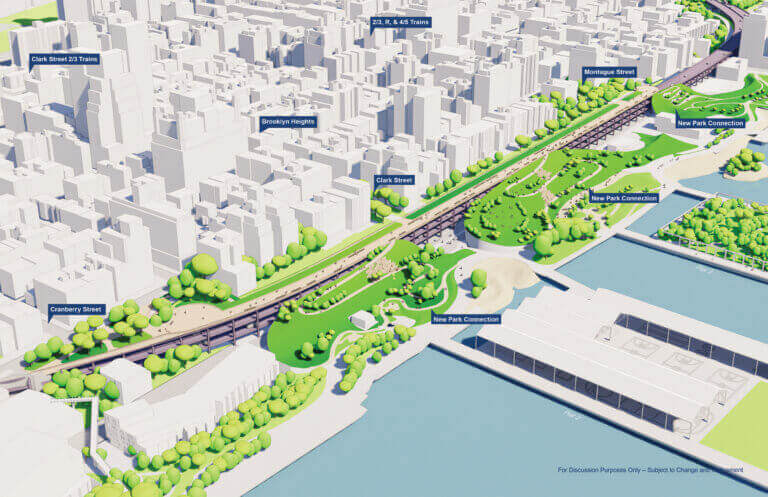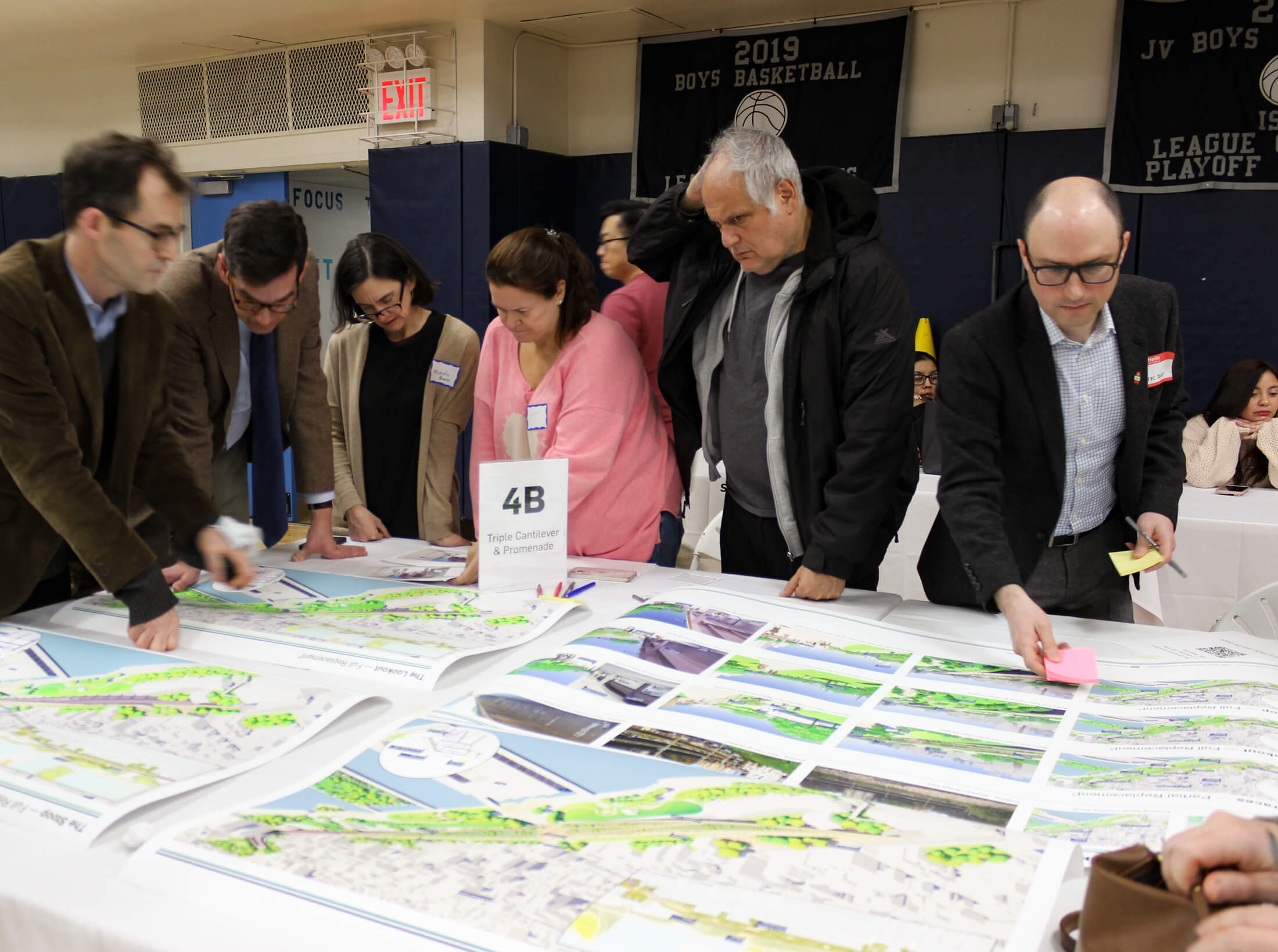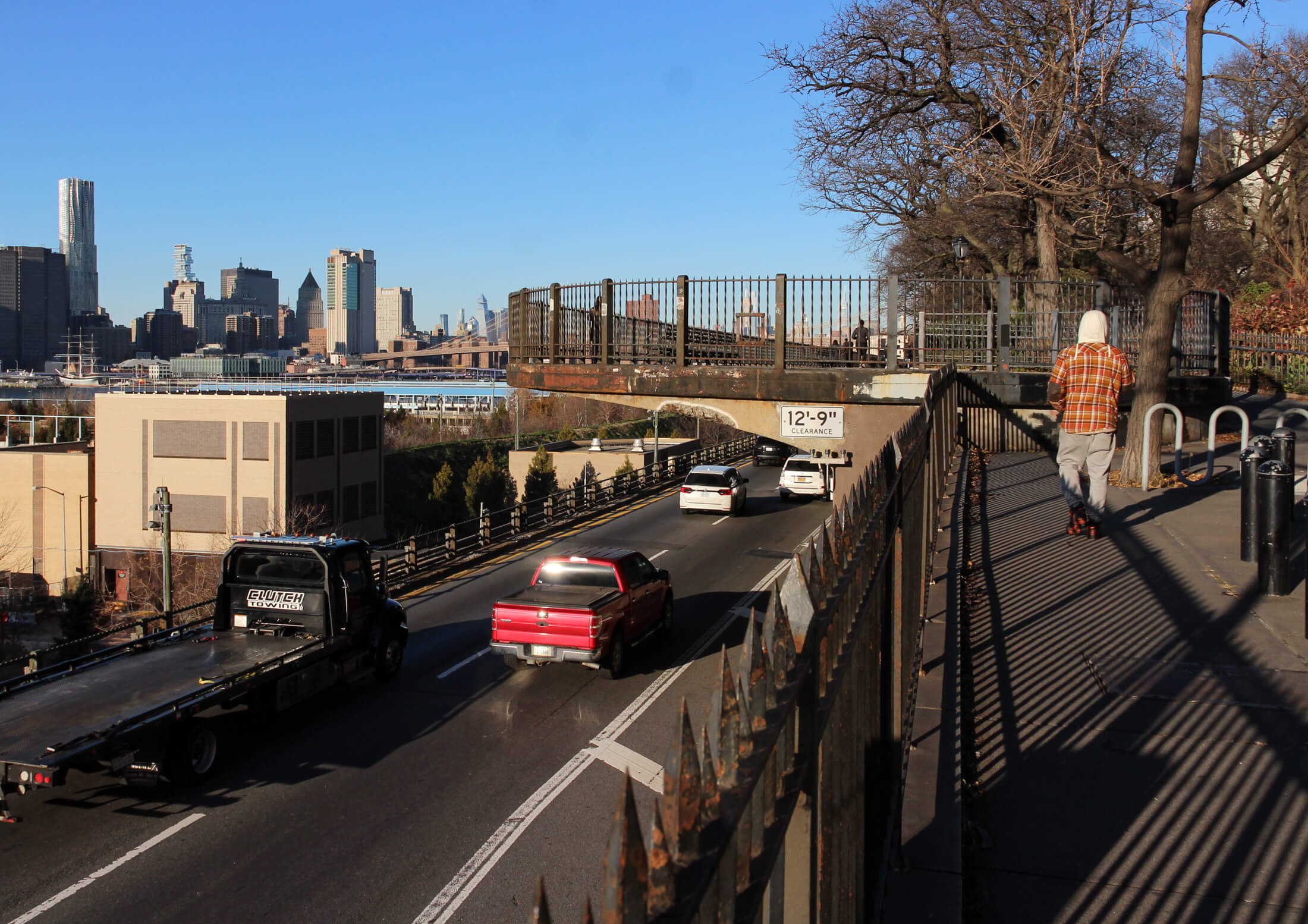City Further Delays Action on Crumbling BQE to Conduct Traffic Study on Widening Roadway
The city has delayed its timeline on reimagining the infamous triple cantilever portion of the Brooklyn-Queens Expressway, stalling the start of construction by at least a few months.

The city will delay construction on the infamous triple cantilever portion of the BQE. Photo by Susan De Vries
The city has delayed its timeline on reimagining the infamous triple cantilever portion of the Brooklyn-Queens Expressway, stalling the start of construction by at least a few months.
Rather than conducting a comprehensive traffic study concurrently with a two-year environmental review, as was initially planned, the city’s Department of Transportation will now carry out the traffic study first.
The results of the study, along with feedback from an additional round of public engagement, will help the city select between two designs for the environmental review — with either two or three lanes of traffic moving in either direction on the dilapidated roadway.

The delay will also allow the agency to incorporate changes in traffic volumes brought on by congestion pricing into the study, a DOT rep said.
Per the new timeline, the environmental review — which was scheduled to begin this fall, after being delayed for the first time earlier this year — will start in early 2024. Final design and construction has also been pushed back, from early 2027 to the later half of the same year.
Delays and deterioration on the BQE
“We have a once-in-a-generation opportunity to reimagine BQE Central, and we are determined to get it right,” DOT spokesperson Vin Barone said in a statement. “This revised timeline, developed with our state and federal partners, streamlines decision-making and allows for additional public engagement — maximizing our chances of getting through the federal approval process, securing critical federal funding, and delivering a safer, greener BQE.”
In order for the BQE redesign project to qualify for needed federal funds, the environmental review must be finished within two years of its start date, Barone explained, and the results of the traffic study are necessary to keep the review on schedule.
A 2020 report by a panel of experts warned that the Robert Moses-era triple cantilever was visibly deteriorating and in danger of becoming unsafe for large trucks by 2026, and warned that the city should take immediate, short-term action as a long-term solution was designed. In response, then-mayor Bill de Blasio narrowed the roadway from Atlantic Avenue to the Brooklyn Bridge from three lanes in each direction to two, hoping to extend the life of the stretch.
Late last year, the Adams administration unveiled three proposals for the reconstruction of the triple cantilever. Each included the re-widening of the roadway to three lanes — to the ire of local residents and politicians.
Members of the project’s Community Visioning Council said they were not made aware of the delay before the Daily News first reported about it on June 8, and have been advised they will learn more on June 22.
Kelly Carroll, a member of the CVC and the executive director of the Atlantic Avenue Business Improvement District, said her organization’s primary concern is safety.

“Years ago, they said this thing had a lifespan until 2026,” she said. “How can you just push this back even further? People are very afraid — especially with the collapse of I-95 this weekend.”
The city is still on track to release their plan to revamp the dangerous Atlantic Avenue interchange near Columbia Street at a public workshop this Thursday, Carroll added.
City plans interim repairs to keep roadway safe
To compensate for the pushed-back schedule, the city plans to begin some short-term repairs on the most-damaged sections of the triple cantilever this year to keep it safe and usable until 2028.
The triple cantilever is the most closely monitored of any of the city’s 800 bridges, according to the DOT, and is regularly inspected by a team of engineers. Later this year, the state is expected to launch an automated weight enforcement program to crack down on overweight trucks, which experts say cause dramatically more damage to the span than regular traffic.

“We can assure New Yorkers that BQE Central is safe, and we will continue close coordination with state, federal, and community stakeholders as we make all necessary interim repairs,” Barone said.
Lara Birnback, a member of the CVC and the executive director of the Brooklyn Heights Association, said the Adams administration’s decision to take up the gargantuan task of fixing up the BQE was “commendable.”
“However, we’ve been concerned from the start about the city’s overly ambitious timeline for securing federal funding,” Birnback told Brooklyn Paper. “It’s no secret that this is an extremely complicated, multi-stakeholder project. I remain deeply concerned that we still don’t know when the long-awaited and desperately needed repairs to the triple cantilever will begin, and urge the city to provide more information as soon as possible about what we can expect and when.”
Editor’s note: A version of this story originally ran in Brooklyn Paper. Click here to see the original story.
Related Stories
- As DOT Presents Refined Concepts for BQE, Locals Question Cost, Climate Impact, Two-Lane Study
- Brooklyn Pols Push Feds for Fewer Lanes as City Finalizes BQE Cantilever Redesign
- Brooklyn Pols Want Total Rethink of ‘Health Hazard’ BQE, Pan Lack of State Action
Email tips@brownstoner.com with further comments, questions or tips. Follow Brownstoner on Twitter and Instagram, and like us on Facebook.








What's Your Take? Leave a Comment